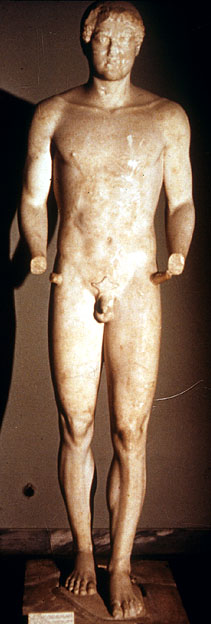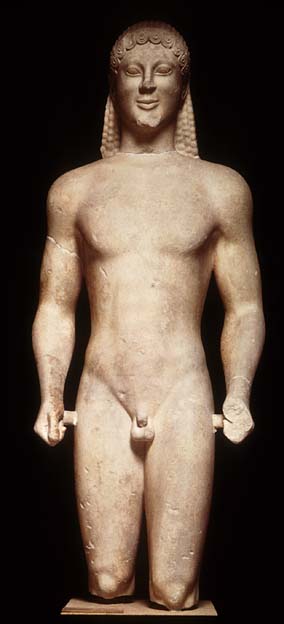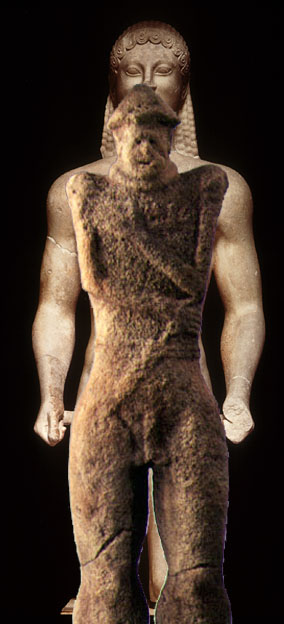Hirschlanden Comparanda -- Ptoon Kouros and Aristodikos


 The two late archaic kouroi depicted here exemplify the style current in Greece from a generation before to the time in which the Hirschlanden warrior was carved. If the sculptor responsible for the warrior's lower body had in fact been trained in Greece or by western Greeks, it would have been in the style and technique of these works.
The two late archaic kouroi depicted here exemplify the style current in Greece from a generation before to the time in which the Hirschlanden warrior was carved. If the sculptor responsible for the warrior's lower body had in fact been trained in Greece or by western Greeks, it would have been in the style and technique of these works.
The Ptoon kouros is still displays many of the archaic characteristics: the long hair, archaic "smile," the long, osmewhat flat face, the extremely muscular and tense upper body. The curves are more rounded and the transitions smoother; still, the knees are sharply articulated, and the proportions are considerable longer than the Hirschlanden warrior's. I tried to line up the composite side view as in Beeser's and Eibner's drawings, to see whether it would be possible to carve the warrior from a kouros of the style of perhaps thirty years earlier. When the knees and buttocks align, we see how very flat and shallow the Hirschlanden figure is. At the same time, it becomes clear that his massive calves and knees could not have been reduced from the tapering and differentiated musculature and striding stance of the kouros. By the same token, the head, albeit small, requires more stone than is left by the kouros.
By about 500 BCE, the kouros has moved into the transition between late archaic and severe style. Aristodikos sports the short hair, the unsmiling face and the long, athletic proportions current at a stage in Greek sculture as it is about to discover contrapposto and the pysics of the figure moving naturally in space. None of this revolutionary trend is discernable in the Hirschlanden statue. When aligned at the kees, it becomes clear that the two sculptures have in common not much more than the spacing of the legs apart, although even there the stances and proportions are entirely different. I do not see the hand of either a contemporary Greek sculptor, nor one schooled in contemporary Greek style, at work in Hirschlanden.







